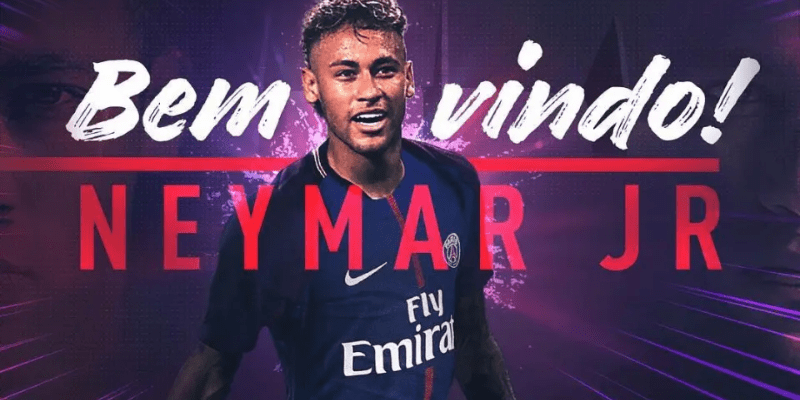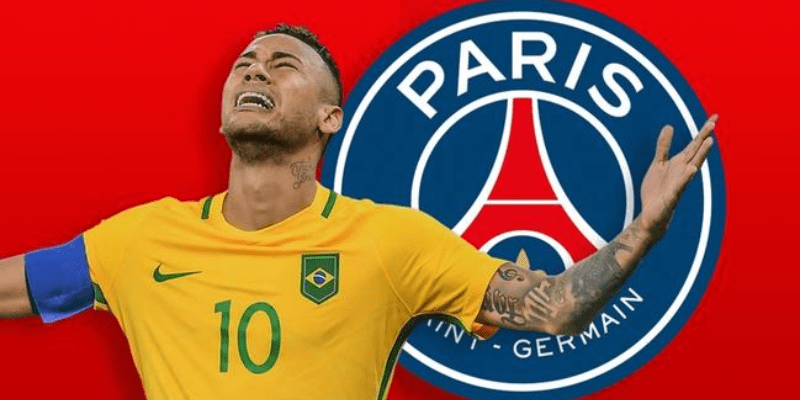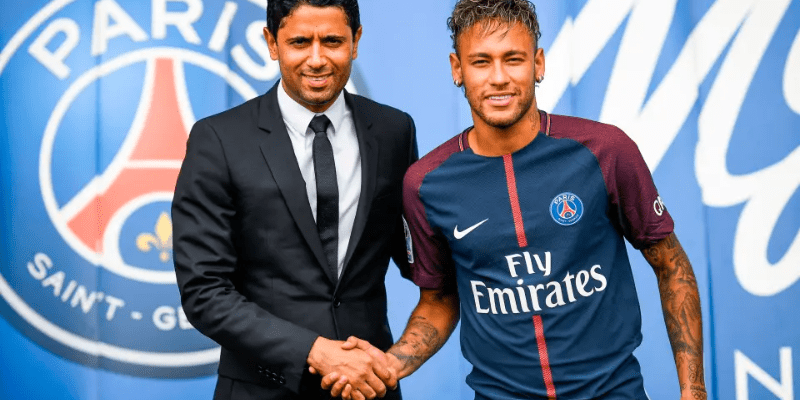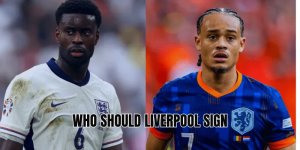In the lavish world of modern football, PSG transfer record isn’t just a statistic — it’s a statement. When Paris Saint-Germain shelled out €222 million to bring Neymar in 2017, the football universe gasped. Since then, every arrival, every million spent, has been measured not just in euros but in ambition. In this article, KorKick will take you through the dazzling history, the turning points, and what the PSG transfer record tells us about the club’s vision — and their challenge to sustain it.
The Neymar Megadeal: PSG’s Defining Moment

Arguably the single most audacious transfer in football history, Neymar’s move from Barcelona to PSG in August 2017 remains the club’s record signing. The fee — €222 million — shattered previous world records and marked a new era for Paris.
That deal did more than bolster PSG’s star-power; it signaled their intention to snap up the globe’s biggest names. Overnight, the French club no longer operated like a domestic power — they stepped fully into the global elite. (Prior to that, record buys hovered in the tens of millions.)
Even today, no PSG arrival has officially surpassed that figure. The PSG transfer record still stands at Neymar’s blockbuster move.
Top 10 Most Expensive PSG Signings
Below is a snapshot of PSG’s biggest splurges, showing how the club has prioritized attacking talent, youth, and versatility. These are the signings that pushed their financial boundaries:
| Rank | Player | Year | From | Fee (€ millions) |
| 1 | Neymar | 2017 | Barcelona | 222 |
| 2 | Kylian Mbappé | 2018 | Monaco | 180 |
| 3 | Randal Kolo Muani | 2023 | Eintracht Frankfurt | 95 |
| 4 | Khvicha Kvaratskhelia | 2025 | Napoli | 70 |
| 5 | Achraf Hakimi | 2021 | Inter | 68 |
| 6 | João Neves | 2025 | Benfica | ~65.92 |
| 7 | Gonçalo Ramos | 2023 | Benfica | 65 |
| 8 | Edinson Cavani | 2013 | Napoli | 64.5 |
| 9 | Ángel Di María | 2015 | Manchester United | 63 |
| 10 | Illya Zabarnyi | 2025 | Bournemouth | 63 |
These big-money moves reflect PSG’s evolving philosophy: once laser-focused on marquee forwards, now investing in youth, depth, and balance.
Notice also how recent acquisitions (Kvaratskhelia, Neves, Zabarnyi) are closing in on the €70 million mark — a new frontier in their spending curve.
PSG After Neymar: Strategy, Risks, and FFP

The Mbappé gamble
Just weeks after Neymar’s arrival, PSG secured Kylian Mbappé from Monaco on what was initially a loan with an obligation to buy — eventually costing €180 million. That move solidified their ambition: two of the world’s most electrifying attackers under one roof. But it also raised the stakes in financial fair play (FFP) compliance and squad construction.
Shifting strategy: youth and balance
As UEFA and French authorities kept a closer eye on PSG’s, the club gradually shifted tactics. Instead of chasing only superstars, they began targeting ambitious young players and rebuilding across positions. Hence the rise of names like Neves and Zabarnyi.
FFP constraints
PSG’s audacious spending did not escape regulation. Following Neymar and Mbappé, the club faced scrutiny under FFP rules and had to balance revenues, player sales, and wage control. Future record pursuits must navigate these tighter margins.
Recent Record Moves: Kvaratskhelia and Zabarnyi
While Neymar’s €222 million remains untouchable so far, PSG has continued pushing their internal benchmarks.
Khvicha Kvaratskhelia (2025)
In January 2025, PSG landed Georgia’s rising star, Khvicha Kvaratskhelia,. The reported deal: €70 million plus bonuses (reportedly up to €80 million total). His arrival hinted at PSG’s readiness to push new financial boundaries.
Kvaratskhelia quickly made an impact — scoring in the Champions League final and playing a key role in PSG’s continental success.
Illya Zabarnyi (2025)
In another bold step, PSG moved for Ukrainian center-back Illya Zabarnyi from Bournemouth for about €63 million. This bet on defensive solidity showed a shift in spending priorities: not just flashy attackers, but strong spine-building.
These moves underscore that PSG’s appetite for big signings is far from over — but now it’s more calculated, and more balanced.
Biggest PSG Sales: When Record Fees Leave Paris

The evolution of PSG transfer record doesn’t stop at signings — their biggest sales tell stories too.
- Neymar (2023 → Al-Hilal): Sold for roughly €90 million, marking PSG’s top exit. kipedia])
- Xavi Simons (2025 → Leipzig): Left for around €50 million.
- Manuel Ugarte (2024 → Manchester United): Also fetched near €50 million.
These sales help balance PSG’s books and symbolize the club’s status: they don’t just buy talent — they develop and exit stars too.
What the PSG Transfer Record Means for the Future
Pressure to compete and to justify
In Paris, every signing echoes expectations. The PSG transfer record doesn’t just benchmark cost — it benchmarks demand: for trophies, for instant impact, for global branding.
Smarter risk-taking
The shift toward younger signings, versatile transfers (defense, midfield), and measured spending suggests PSG is learning — not abandoning ambition.
The eventual Neymar successor
One day, that €222 million record will tumble. But the right player must combine brand appeal, sporting fit, and financial viability. That kind of signing won’t come lightly.
Final Thoughts
The PSG transfer record is more than a number — it’s a lens on how Paris Saint-Germain dreams, evolves, and competes. Neymar’s jaw-dropping move still stands as the benchmark. Yet with signings like Kvaratskhelia and Zabarnyi, we see a club unafraid to redefine its boundaries.
As PSG walks the tightrope of ambition and regulation, we at KorKick will be watching closely. Want to dive deeper into PSG’s transfer strategy or future targets? Drop a comment, share your thoughts, or check our other pieces on major clubs and players.






